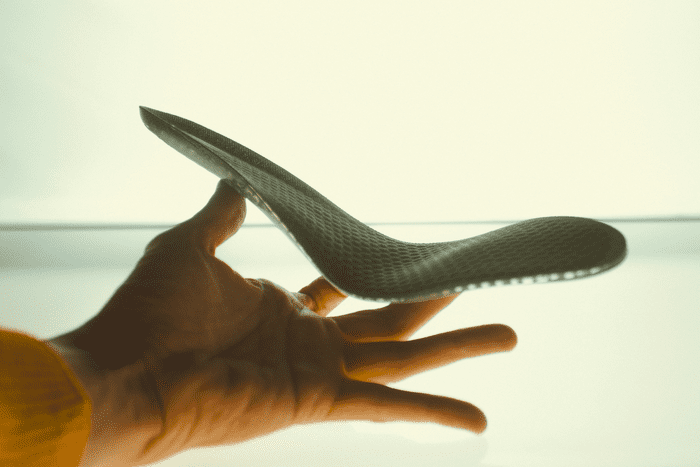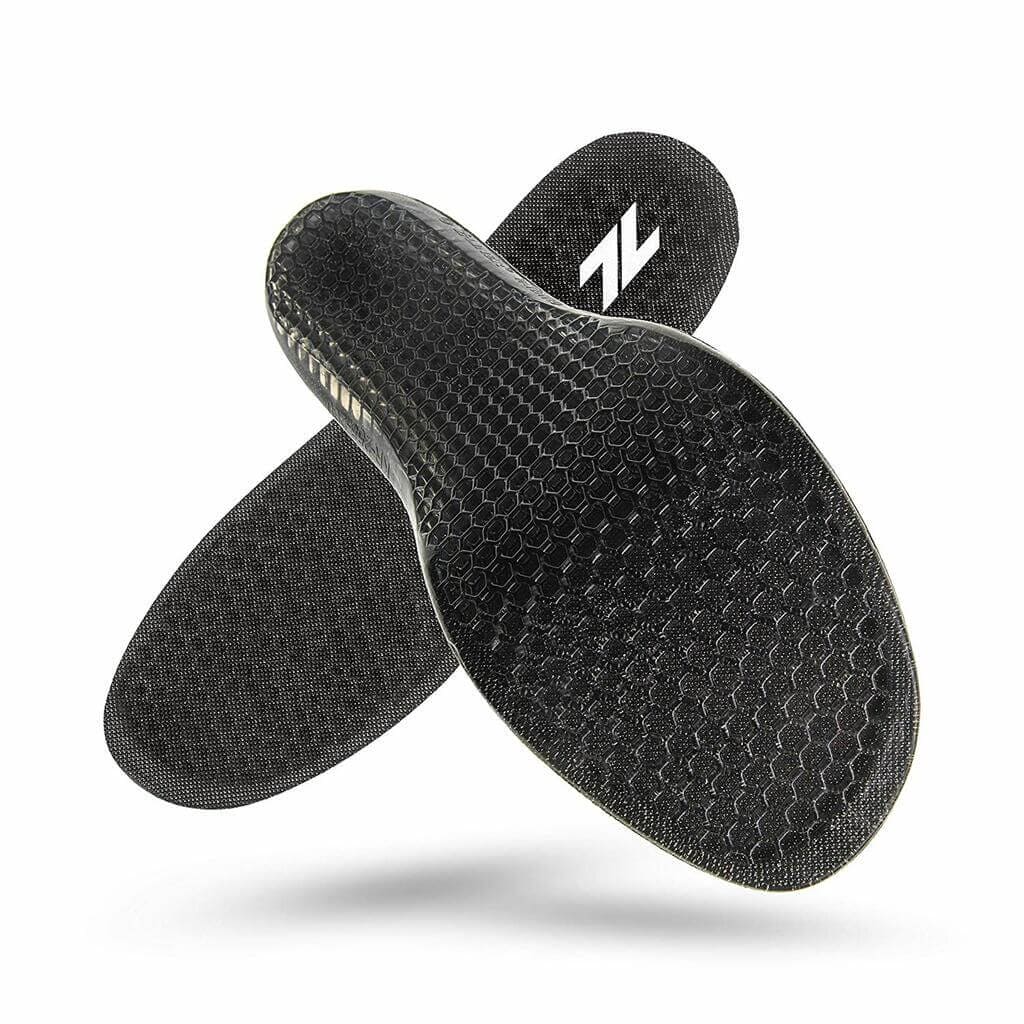How Long Do Insoles Last? A Guide to Keeping Your Feet Happy

While most insoles last anywhere from 6 months to a few years, their lifespan depends on usage, material quality, and maintenance.
This guide will help you understand the durability of different types of insoles— from custom orthotics to off-the-shelf options— and recognize signs of wear. You’ll also discover tips to extend their lifespan and get the most out of your investment.
Whether you’re an athlete, a busy professional, or someone who spends long hours on your feet, taking care of your insoles is key to maintaining foot health and overall comfort. Let’s dive in.
What Factors Affect the Lifespan of Insoles?

Several factors determine how long your insoles will last. Knowing these can help you manage wear and plan replacements effectively.
1) Daily Wear and Tear
How often you wear insoles and the intensity of use greatly affect their lifespan. Factors like shoes wearing out due to constant movement and prolonged standing also accelerate insole degradation.
Physically demanding environments, such as construction sites or hospitals, often require more frequent insole replacements due to continuous impact and pressure.
For casual use—like weekend hikes or evening strolls—insoles can last closer to 12 months. However, high-impact activities such as running or sports accelerate wear, as repeated stress compresses the cushioning and reduces arch support more quickly.
2) Insole Materials
The material composition of your insoles significantly affects their durability. For example:
-
Foam Insoles — Lightweight and affordable but prone to compression over time.
-
Gel Insoles — Excellent for shock absorption but may leak or flatten with heavy use.
-
Cork and Leather Insoles — Sturdy and long-lasting but require regular maintenance.
-
Memory Foam — Provides customized comfort but compresses quickly, losing its effectiveness.
Understanding these material differences can help you choose insoles that match your specific needs and activity level.
3) Body Weight and Foot Mechanics
Your body weight and foot structure play a major role in how insoles wear over time. Heavier individuals may experience faster compression, especially in high-impact areas like the heel and arch.
Foot mechanics also affect longevity. Those with flat feet, high arches, or overpronation often develop uneven wear patterns, which can reduce support and lead to discomfort. Choosing insoles with durable materials and proper arch reinforcement can help maintain comfort and stability for longer.
4) Footwear Environment
Environmental conditions significantly impact insole longevity. Exposure to moisture, humidity, or sweat can accelerate material breakdown, especially if insoles aren’t properly dried between uses.
Similarly, extreme temperatures—such as prolonged direct sunlight or excessive heat—can warp or weaken certain materials, reducing their effectiveness over time. To maximize durability, store insoles in a cool, dry place and allow them to fully air out after use.
5) Usage in Multiple Pairs of Shoes
Transferring insoles between shoes without considering fit can also shorten their lifespan. Insoles trimmed to fit one shoe may not sit correctly in another, leading to creasing or cracking.
How Long Do Insoles Typically Last by Material?

Understanding the lifespan of different orthotic insole materials helps set realistic expectations. Below is an expanded guide:
-
Foam Insoles - These typically last 6–9 months. Compression lines, visible flattening, or reduced comfort are telltale signs they need replacing. Softer materials such as foam insoles are great for light use but wear out quickly under daily stress.
-
Memory Foam Insoles - Designed to mold to your feet, these provide a customized fit but compress faster than other types, often within 6 months. These insoles are popular among individuals with plantar fasciitis for their cushioning properties.
-
Gel Insoles - Gel insoles excel in shock absorption, which makes them ideal for runners or individuals with joint and heel pain. However, they may flatten or even leak over time, especially if subjected to high-impact activities.
-
Cork Insoles - Cork insoles are a durable option that can last up to a year. They offer excellent arch support, but regular maintenance is essential to prevent cracking.
-
Leather Insoles - Leather insoles are long-lasting and stylish and can provide 12–18 months of use if properly maintained. Cleaning with a damp cloth and conditioning prevents hardening and cracking.
Upgrade to Z-Liner Insoles for Extended Lifespan
Z-Liner Insoles are built for durability and high performance, offering all the benefits of traditional insoles while outlasting most standard options. Their premium materials and advanced honeycomb design ensure long-lasting comfort, superior shock absorption, and consistent support, even with daily wear.
Click here to experience the Z-Liner difference and maximize your insole’s lifespan!
Signs It’s Time to Replace Your Insoles

Worn-out insoles can lead to discomfort, foot pain and issues. Here’s what to watch for::
-
Visible Flattening or Holes - Visible wear or damage like compression lines or noticeable thinning on the surface of your insoles are clear indications that they’ve lost their cushioning. Holes are also a sign of significant wear and should not be ignored. These are often seen in high-pressure areas like the heel or forefoot.
-
Reduced Cushioning or Support - If your feet feel more fatigued or sore after wearing shoes with old insoles, it may be because they no longer provide the support your feet need. Arch supports that collapse or heels that feel hard rather than springy can contribute to discomfort. It can even worsen conditions like plantar fasciitis or ankle pain.
-
Lingering Odor - Odors that persist even after cleaning suggest that bacterial buildup has infiltrated the insole material. This can lead to hygiene concerns and may aggravate foot problems. Examples of these problems are athlete’s foot or infections.
-
Shifting or Slipping in Shoes - If your insoles no longer fit snugly, they can cause blisters, instability, and discomfort while walking or running. This happens when insoles lose their shape over time, increasing the risk of injury. Replacing them ensures proper support and a secure fit.
Ignoring these signs can lead to foot and joint issues, as your body compensates for the lack of proper support. Regularly inspecting your insoles helps maintain comfort, stability, and overall foot health.
Tips to Extend the Life of Your Insoles

If you want to extend your insoles' lifespan, follow some of these practical tips:
1) Clean and Dry Properly - Regularly wash your insoles with mild soap and lukewarm water to remove sweat, dirt, and bacteria. Avoid soaking them, as excessive moisture can weaken the material. After cleaning, let them air dry completely before reinserting them into your shoes. This prevents moisture buildup, odors, and material breakdown.
2) Alternate Insoles or Shoes - Give your insoles a break by rotating between multiple pairs of insoles. This prevents continuous wear on a single set and allows materials like foam or gel to recover their shape. Alternating also reduces the strain on your new pair of shoes, as insoles and footwear benefit from rest.
3) Correct Sizing & Trim-to-Fit - Ill-fitting insoles can wear out faster due to increased friction and pressure points. Ensure your insoles fit snugly in your shoes without needing frequent adjustments. If necessary, trim the edges using the shoe's original insole as a guide. A proper fit minimizes stress on key areas and boosts comfort for longer wear.
4) Regular Inspections - Check your insoles regularly for signs of wear, such as thinning, flattening, or cracking. That way, you can replace your insoles before they become ineffective. Addressing wear early prevents discomfort and minimizes the risk of developing foot problems.
5) Store Insoles Properly - Store your insoles as you would a new pair of shoes: in a cool, dry place away from direct sunlight when not in use. Heat and moisture can degrade materials like foam, gel, or leather. Proper storage keeps them in optimal condition for longer use.
These proper care habits are some great ways to get lasting comfort and adequate support for your feet from your insoles.
Frequently Asked Questions
Can I Wash My Insoles in the Washing Machine?
Yes, you can wash Z-Liner insoles in the washing machine. However, most other insoles, especially those made from foam or gel, can warp or degrade in the wash. To ensure longevity, it's best to hand wash non-Z-Liner insoles with mild soap and water.
Do High-Impact Activities Shorten Insole Lifespan?
Yes. High-impact activities like running or playing sports put repeated stress on insoles, causing them to compress and wear out faster. Regularly check for signs of wear and replace them as needed to maintain support and cushioning.
Should I Replace My Insoles if I Change Shoes?
Yes, ideally. Different shoes have unique fits, arch heights, and support structures. Replacing insoles ensures they complement the new shoe’s design, providing optimal comfort, stability, and performance.
What Happens if I Don’t Replace My Insoles on Time?
Overdue insole replacement can result in foot fatigue, pain, and misalignment, increasing the risk of injury. Worn-out insoles lose their cushioning and support, potentially worsening conditions like plantar fasciitis, heel spurs, and joint strain. Regular replacement helps maintain comfort and foot health.
How Do I Know My Insoles Are No Longer Supporting My Feet?
Signs that your insoles are no longer providing proper support include noticeable flattening, lingering odor, or discomfort in your arches, heels, or knees. Try pressing on the arch area—if it feels too thin or doesn’t spring back, it’s time for a replacement.
How Long Do Insoles Last?
Insoles typically last 6–12 months, depending on the material, usage, and care. Foam and memory foam insoles last around 6–9 months, gel insoles 6–12 months, cork insoles 9–12 months, and leather insoles over a year with proper maintenance.
Final Thoughts
Insoles are essential for foot health, comfort, and injury prevention, yet they’re often overlooked. Their lifespan depends on factors like material quality, usage frequency, and proper care. By recognizing key signs of wear—flattening, reduced support, or persistent odor—you can prevent discomfort and potential foot issues before they start.
Taking simple steps such as rotating insoles, cleaning them regularly, and inspecting them for damage helps extend their lifespan, ultimately saving you money and ensuring consistent support. Well-maintained insoles not only enhance comfort but also contribute to better posture and overall mobility.
Don’t wait until foot pain slows you down. Replacing your insoles at the right time is a smart investment in your well-being. A fresh pair can transform your walking or working experience, reduce strain, and help you perform at your best—whether you're on your feet all day or engaged in high-impact activities.
If you’re looking for durable, high-performance insoles, Z-Liner Insoles offer the perfect solution. Engineered with advanced materials and designed for superior support, they help you move with confidence and comfort.
Don’t wait until your feet are in pain and discomfort—explore our Z-Liner Insoles today and step into lasting support and comfort!

